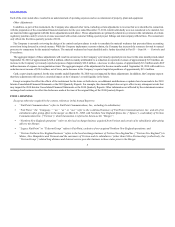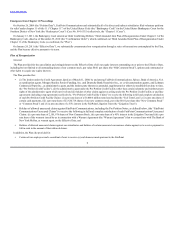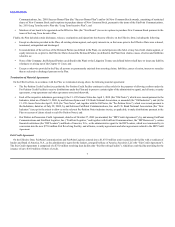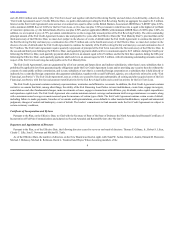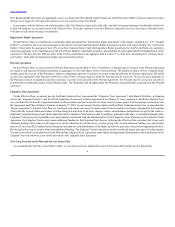FairPoint Communications 2010 Annual Report Download - page 16
Download and view the complete annual report
Please find page 16 of the 2010 FairPoint Communications annual report below. You can navigate through the pages in the report by either clicking on the pages listed below, or by using the keyword search tool below to find specific information within the annual report.
Table of Contents
We seek to capitalize on our LECs’ local presence and network infrastructure by offering enhanced services to customers, as well as billing and collection
services for interexchange carriers.
Enhanced Services. Our advanced digital switch and voicemail platforms allow us to offer enhanced services such as call waiting, call forwarding and
transferring, three-way calling, automatic callback, call hold, caller name and number identification, voice mail, teleconferencing, video conferencing, store-
and-forward fax, follow-me numbers, Centrex services and direct inward dial.
Billing and Collection. Many interexchange carriers provide long-distance services to our LEC customers and may elect to use our billing and collection
services. Our LECs charge interexchange carriers a billing and collection fee for each call record generated by the interexchange carrier’s customer.
Directory Services. Through our local telephone companies, we publish telephone directories in the majority of our locations. These directories provide
white page listings, yellow page listings and community information listings. We contract with leading industry providers to assist in the sale of advertising
and the compilation of information, as well as the production, publication and distribution of these directories.
Cable TV and Video. In certain of our markets, we offer video services to our customers by reselling DirectTV content and providing cable and IP
television video-over-DSL.
Most of our 33 local exchange carriers operate as the ILEC in each of their respective markets. Approximately 63% of our voice access lines served
residential customers as of December 31, 2010. Our business customers accounted for approximately 29% of our voice access lines as of December 31, 2010
and wholesale customers accounted for approximately 8% of our voice access lines as of December 31, 2010.
In addition to voice access lines, we offer HSD service to our customers. At December 31, 2010, we had 289,745 HSD subscribers. We include HSD
subscribers in our calculation of access line equivalents (including voice access lines and HSD lines, which include DSL, wireless broadband, cable modem
and fiber-to-the-premises).
Our operations are primarily focused on rural and small urban markets and are geographically concentrated in the northeastern United States.
The following chart identifies the number of access line equivalents in each of our 18 states as of December 31, 2010:
15


